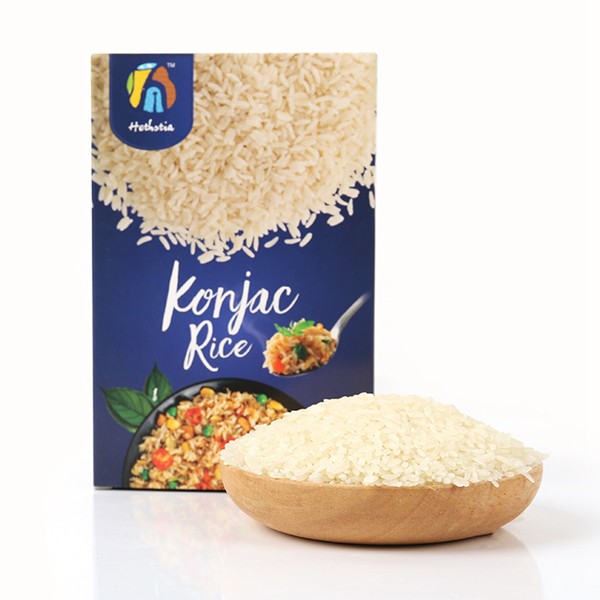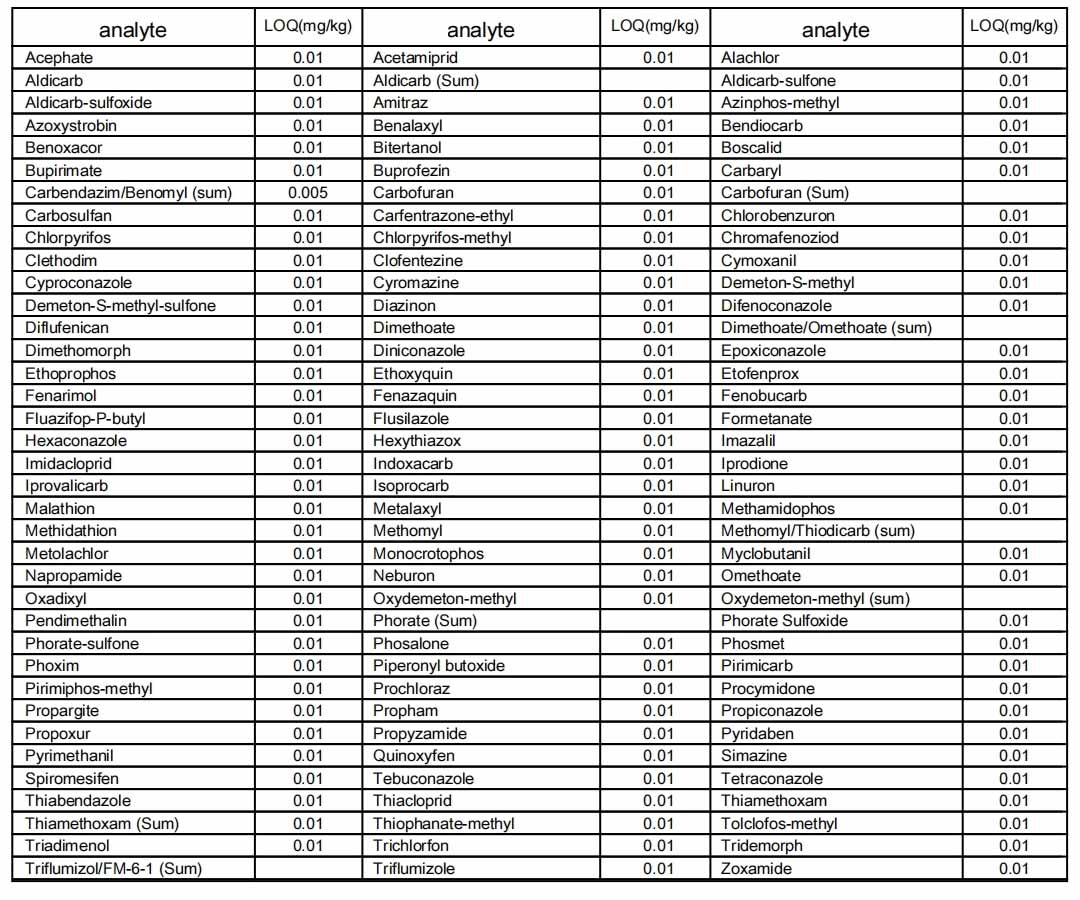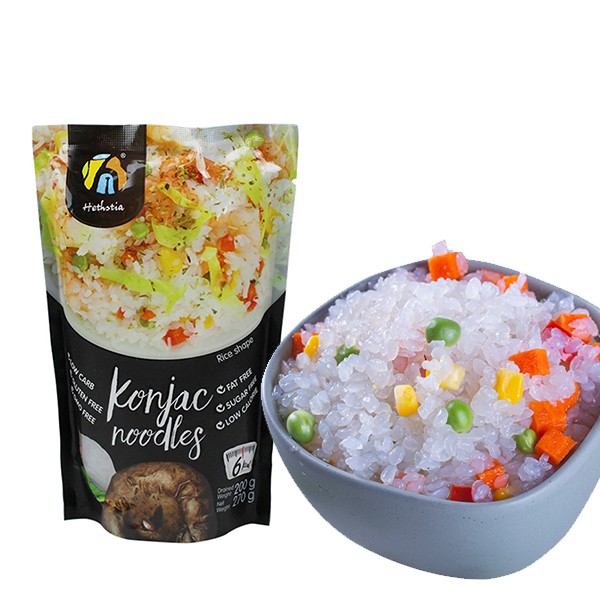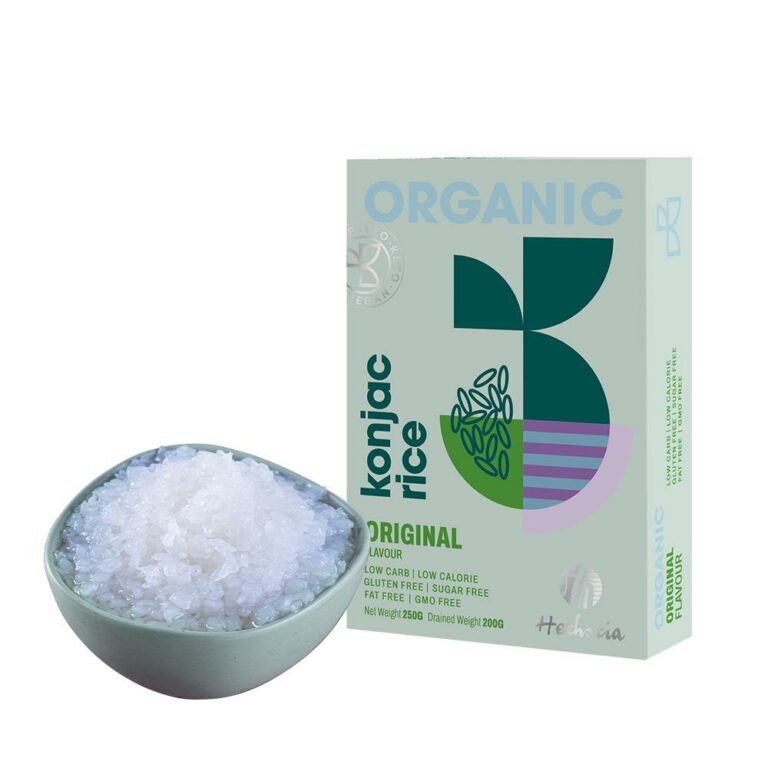Dried Shirataki Rice
Why Choose Hethstia Dried Shirataki Rice
Our dried shirataki rice is a blend of konjac flour, corn flour, red rice flour, or black rice flour, designed to give you a nutritious and delicious alternative to traditional rice.
| Ingredients | ||
| No. | Material | % |
| 1 | Konjac flour | 46 |
| 2 | Corn flour / Red rice flour / Black rice flour | 44 |
| 3 | Water | 10 |
We can customize the packaging according to your requirements.

Dried Shirataki Rice Series
Dry Konjac Red Rice is rich in dietary fiber, low in carbohydrates, and low in the glycemic index. This rice has a great taste and looks very similar to long-grain rice.
Dry Konjac Corn Rice is a rice rich in dietary fiber yet low in carbohydrates. This Konjac rice is made from a mixture of konjac flour, corn flour, and water.
Savor our Dried Konjac Black Rice and discover the joys of healthy eating. Experience the perfect blend of nutrition, flavor, and convenience.
Dry Konjac Rice 1kg, it’s 48% konjac powder, 44% rice flour, and 8% water with traces of protein, fat, and calcium-meaning Shirataki is a guilt-free rice replacement.
Dry Konjac Rice is a rich source of dietary fiber that helps aid digestion and promote weight loss. It allows you to enjoy a full meal without feeling heavy or sluggish.
Your Trusted Shirataki Rice Manufacturer
Hethstia produces a wide range of Konjac Shirataki products. We can customize the packaging boxes in any design, size, and color according to your needs.
Enjoy the guilt-free benefits of a delicious rice alternative while enjoying the many benefits of Shirataki. From weight management and blood sugar control to lower cholesterol and improved digestion, our products are true allies in your quest for overall health.

How to cook dried shirataki rice?
1. Put 40 g of dried shirataki rice into 60-80 grams of hot water for 15 minutes or microwave for 3-4 minutes.
2. Then enjoy it.
Heavy Metal Pesticides Residue Test and Analysis Report

Not Detected: Means not detected at or above the Limit of Quantification (LOQ).
The comment refers to the tested sample and relates only to the investigated parameters.
This analysed sample is in accordance with the requirements of regulation (EC) 396/2005 (regulation on maximum residue levels in food and feed) in its currently valid version.
SU352 Pesticides Quechers 100 parameters Test Report

FAQ
Is it safe to eat shirataki rice every day?
Daily consumption of shirataki rice is generally not recommended due to several potential health concerns. Konjac rice is made from the konjac plant, which is low in calories and carbohydrates and high in fiber but is deficient in essential nutrients such as vitamins, minerals, and protein.
What is the difference between wet and dry shirataki rice?
The main differences between wet and dried Shirataki rice are their preparation, texture, and nutritional content:
1. Preparation: Wet Shirataki rice is pre-cooked and packed in water. It is ready to eat after a quick rinse and heating. Dry Shirataki rice is dehydrated and needs to be cooked in water before consumption.
2. Texture: Wet Shirataki rice usually has a softer, more gelatinous texture due to its high water content.
Dried Shirataki rice: when cooked, it tends to have a harder texture, closer to regular rice.
3. Nutritional content: Wet Shirataki rice is generally very low in calories and carbohydrates, containing about 9 calories and 3 grams of carbohydrates per 100 grams.
The nutritional content of dry white taki rice varies greatly depending on the ingredients added. It may be higher in calories and carbohydrates due to the addition of rice flour or other ingredients.
Can I cook shirataki rice in hot water?
Yes, you can cook Shirataki rice in hot water, but this is not the recommended way to get the best flavor.
Does shirataki rice cause bloating?
Yes, Shirataki rice may cause bloating and other digestive problems in some people. This is mainly due to the high fiber content of glucomannan, the main ingredient in Shirataki rice.
What are the side effects of shirataki rice?
The main side effects of Shirataki rice are as follows: digestive problems, loose stools and flatulence, nausea and abdominal pain, choking hazards and intestinal obstruction, interference with nutrient absorption, and allergic reactions.
To minimize these side effects, it is recommended to gradually introduce white taki rice into your diet, consume it with plenty of water, and monitor your body’s response.











